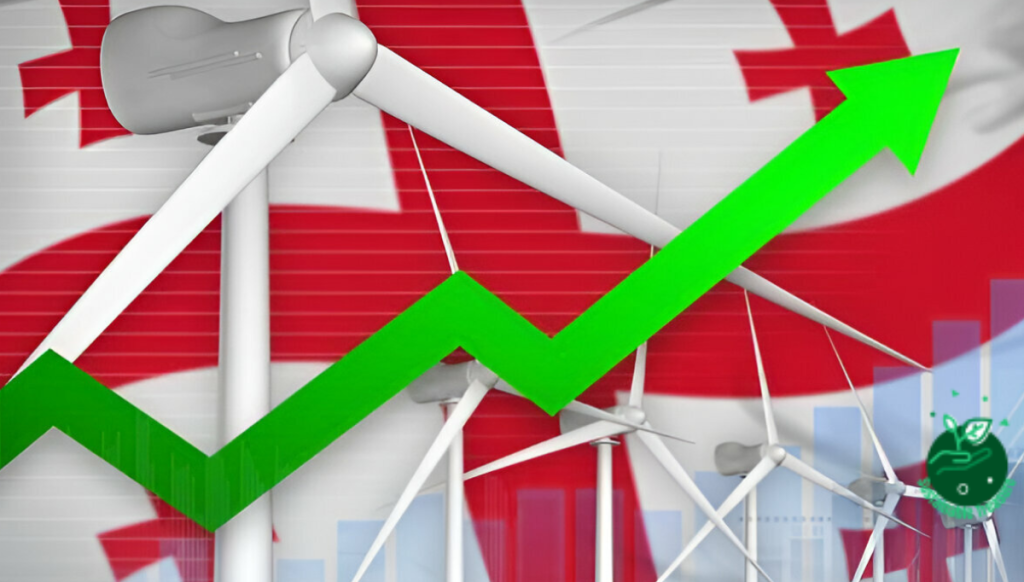Table of Contents
How do you evaluating risk and return in emerging renewable energy markets? This intricate process demands a nuanced understanding of the dynamic forces shaping these burgeoning sectors.
As a seasoned investor, I vividly recall the pivotal moment that ignited my passion for sustainable investing. During a visit to a remote village, witnessing families light their homes with harmful kerosene lamps, I realized the transformative potential of clean energy access.
That profound experience fueled my commitment to navigating the complexities of renewable energy investing, empowering communities while generating returns.
In this comprehensive guide, I’ll share my expertise, honed through years of due diligence and strategic decision-making, to provide you with an in-depth exploration of the key factors influencing risk and return in these emerging markets.
Prepare to delve into a world of opportunities, challenges, and innovative solutions that shape the future of energy investing.
Let’s dive in.
Fundamentals for Evaluating Risk and Return in Emerging Renewable Energy Markets

The Rise of Renewable Energy
- Global Trends in Renewable Energy Adoption
- Increasing demand for clean energy sources
- Falling costs of renewable energy technologies
- Commitments to carbon neutrality and climate action
- Growth of Emerging Markets in Renewable Energy
- Rapid economic development and rising energy needs
- Untapped potential for renewable energy generation
- Favorable climatic conditions for solar, wind, and hydro power
Investment Landscape in Renewable Energy
- Overview of Investment Opportunities
- Utility-scale renewable energy projects
- Distributed generation and rooftop solar
- Renewable energy technology development
- Supporting infrastructure and grid integration
- Key Players in Renewable Energy Markets
- Government agencies and development banks
- Private equity firms and institutional investors
- Independent power producers (IPPs)
- Renewable energy companies and technology providers
Assessing Investment Risks
Market Risks in Renewable Energy
- Volatility and Uncertainty in Emerging Markets
- Political instability and regulatory changes
- Currency fluctuations and exchange rate risks
- Supply chain disruptions and resource scarcity
- Regulatory Risks and Policy Changes
- Shifting energy policies and incentive programs
- Permitting and approval processes
- Environmental regulations and compliance
Technological Risks
- Innovation and Technological Advancements
- Rapid pace of technological progress
- Obsolescence risk for existing technologies
- Adoption of cutting-edge renewable energy solutions
- Challenges in Adopting New Renewable Technologies
- Integration with existing energy infrastructure
- Technical expertise and skilled workforce
- Cost and scalability considerations
Environmental Risks
- Impact of Climate Change on Renewable Projects
- Extreme weather events and natural disasters
- Water scarcity and resource constraints
- Changes in wind patterns and solar irradiance
- Mitigating Environmental Risks in Energy Investments
- Climate risk assessment and adaptation strategies
- Resilient infrastructure design and construction
- Diversification across different geographies and resources
Evaluating Return on Investment (ROI)

Financial Metrics in Renewable Energy Investments
- Return on Investment (ROI) Calculation Methods
- Net Present Value (NPV) analysis
- Internal Rate of Return (IRR)
- Payback period and profitability ratios
- Evaluating Cash Flow and Payback Periods
- Projecting revenue streams and operational costs
- Accounting for capital expenditures and financing
- Impact of government incentives and subsidies
Social and Environmental Returns
- Social Impact of Renewable Energy Projects
- Job creation and economic development
- Access to affordable and reliable energy
- Improved air quality and public health
- Environmental Benefits and Sustainability Metrics
- Greenhouse gas emission reductions
- Water conservation and land use efficiency
- Alignment with Sustainable Development Goals (SDGs)
Strategies for Risk Mitigation
Diversification of Investment Portfolios
- Balancing Risk with Diverse Renewable Energy Assets
- Combining different renewable energy technologies
- Investing across multiple geographic regions
- Exploring complementary energy storage solutions
- Spread of Investment Across Different Geographies
- Reducing exposure to country-specific risks
- Leveraging diverse policy environments and incentives
- Mitigating climate-related risks through geographic diversification
Insurance and Hedging Strategies
- Utilizing Insurance Products for Risk Mitigation
- Property and casualty insurance for renewable projects
- Business interruption and performance insurance
- Weather risk insurance and derivative products
- Hedging Against Market Fluctuations and Price Risks
- Commodity price hedging through futures and options
- Interest rate and currency hedging instruments
- Power purchase agreements (PPAs) and long-term contracts
Collaborative Partnerships and Joint Ventures
- Pooling Resources for Large-scale Renewable Projects
- Sharing development costs and risk among partners
- Accessing diverse expertise and technical capabilities
- Leveraging local knowledge and relationships
- Leveraging Partnerships for Risk Sharing and Expertise
- Public-private partnerships (PPPs) for project financing
- Collaborations with research institutions and academia
- Strategic alliances with technology providers and suppliers
Regulatory Frameworks and Policy Support
Government Incentives and Subsidies
- Role of Government Policies in Promoting Renewable Energy
- Feed-in tariffs and renewable energy credits
- Tax incentives and investment subsidies
- Renewable energy portfolio standards and mandates
- Impact of Regulatory Support on Investment Decisions
- Enhancing project economics and financial viability
- Reducing investment risks and attracting capital
- Driving innovation and technology development
Legal and Compliance Considerations
- Compliance with Environmental Regulations
- Environmental impact assessments and permitting
- Emissions standards and carbon pricing mechanisms
- Land use and zoning requirements
- Legal Frameworks for Renewable Energy Projects
- Power purchase agreements and energy contracts
- Intellectual property rights and technology licensing
- Dispute resolution and arbitration mechanisms
FAQs

What are the key drivers fueling the growth of renewable energy markets in emerging economies?
Rapid economic development, rising energy demands, favorable climatic conditions, and government policies aimed at promoting clean energy and reducing carbon emissions are driving the growth of renewable energy markets in emerging economies. Additionally, the falling costs of renewable technologies and the need for energy security have made renewable energy investments increasingly attractive in these markets.
How can investors assess and mitigate regulatory risks in emerging renewable energy markets?
Investors should thoroughly analyze the regulatory environment, energy policies, and incentive programs in the target markets. Partnering with local firms, engaging with policymakers, and ensuring compliance with environmental regulations can help mitigate regulatory risks. Additionally, diversifying investments across multiple jurisdictions can reduce exposure to policy changes in a single market.
What are the main financial metrics used to evaluate the return on investment (ROI) in renewable energy projects?
Common financial metrics used include net present value (NPV), internal rate of return (IRR), payback period, and profitability ratios such as return on equity (ROE) and return on assets (ROA). Cash flow projections, operational costs, capital expenditures, and the impact of government incentives and subsidies are also crucial factors in evaluating ROI.
How can investors address technological risks in emerging renewable energy markets?

Staying abreast of the latest technological advancements, investing in research and development, and collaborating with technology providers can help mitigate technological risks. Additionally, diversifying investments across multiple renewable energy technologies and adopting a portfolio approach can reduce the impact of obsolescence or underperformance of specific technologies.
What strategies can be employed to mitigate environmental risks in renewable energy investments?
Conducting comprehensive climate risk assessments, implementing adaptation strategies, and designing resilient infrastructure can help mitigate environmental risks. Diversifying investments across different geographies and resources, and exploring complementary energy storage solutions, can also reduce exposure to climate-related risks and resource constraints.
How can collaborative partnerships and joint ventures benefit investors in emerging renewable energy markets?
Collaborative partnerships and joint ventures allow investors to pool resources, share development costs and risks, access diverse expertise and technical capabilities, and leverage local knowledge and relationships. Public-private partnerships (PPPs) and strategic alliances with technology providers, research institutions, and local firms can provide significant advantages in navigating emerging markets.
What role do government incentives and subsidies play in shaping investment decisions in renewable energy markets?
Government incentives and subsidies, such as feed-in tariffs, renewable energy credits, tax incentives, and investment subsidies, can significantly enhance project economics and financial viability. These policies can reduce investment risks, attract capital, and drive innovation and technology development, thereby influencing investment decisions in renewable energy markets.
What are the key legal and compliance considerations for renewable energy projects in emerging markets?
Compliance with environmental regulations, emissions standards, land use requirements, and zoning laws is crucial. Investors must also navigate power purchase agreements, energy contracts, intellectual property rights, and technology licensing issues. Establishing robust dispute resolution and arbitration mechanisms is essential for mitigating legal risks in emerging markets.
Conclusion
As the world transitions towards a more sustainable energy future, emerging renewable energy markets offer significant investment opportunities. However, evaluating the risks and potential returns in these dynamic markets requires a comprehensive understanding of market dynamics, technological advancements, environmental factors, and regulatory frameworks.
By implementing effective risk management strategies, diversifying investment portfolios, leveraging collaborative partnerships, and aligning with supportive policies, investors can navigate the complexities of emerging renewable energy markets while capitalizing on the immense growth potential. Ultimately, responsible and well-informed investments in renewable energy will not only generate financial returns but also contribute to the global effort towards a cleaner, more secure, and sustainable energy landscape.



